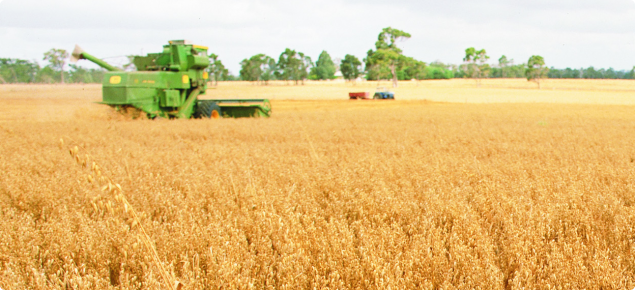Harvesting
While the direct heading of grain is the cheapest method of harvesting, the danger is that there may be long periods of high relative humidity in which the harvesting of dry grain is not possible. This may cause considerable delays to the harvesting operation and increase the risk of head loss or grain being discoloured by early summer rains.
To reduce harvesting delays the grain can be direct harvested at a moisture content above 12% and then placed under aeration to maintain quality or passed through a grain dryer to reduce its moisture content to a level that can be safely stored.
- First harvest the varieties that are likely to shed or lodge. Delays can lead to significant lodging and shedding due to crop movement in the wind.
- Care must be taken in harvesting milling varieties to minimise the amount of dehulled grain.
- Consider management of stubble for the succeeding crop (straw length and spreading) and collection of grass seed to reduce weeds in the next year.
- Hull-less oats are susceptible to harvest damage, adjustment to the harvest is therefore critical.


